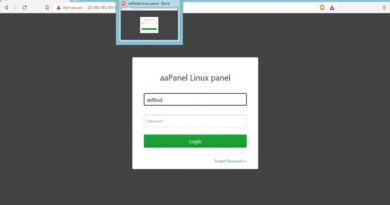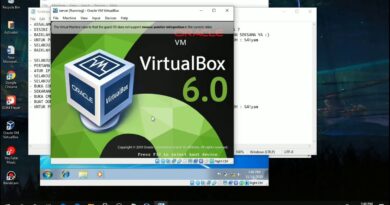Running Kubernetes on OpenStack and Bare Metal
Kubernetes is a portable, extensible, open-source platform for managing containerized workloads and services, that facilitates both declarative configuration and automation. It has a large, rapidly growing ecosystem. Kubernetes services, support, and tools are widely available.
The name Kubernetes originates from Greek, meaning helmsman or pilot. Google open-sourced the Kubernetes project in 2014. Kubernetes builds upon a decade and a half of experience that Google has with running production workloads at scale, combined with best-of-breed ideas and practices from the community.
Going back in time
Containers are becoming popular because they have many benefits. Some of the container benefits are listed below:
Agile application creation and deployment: increased ease and efficiency of container image creation compared to VM image use.
Continuous development, integration, and deployment: provides for reliable and frequent container image build and deployment with quick and easy rollbacks (due to image immutability).
Dev and Ops separation of concerns: create application container images at build/release time rather than deployment time, thereby decoupling applications from infrastructure.
Observability not only surfaces OS-level information and metrics, but also application health and other signals.
Environmental consistency across development, testing, and production: Runs the same on a laptop as it does in the cloud.
Cloud and OS distribution portability: Runs on Ubuntu, RHEL, CoreOS, on-prem, Google Kubernetes Engine, and anywhere else.
Application-centric management: Raises the level of abstraction from running an OS on virtual hardware to running an application on an OS using logical resources.
Loosely coupled, distributed, elastic, liberated micro-services: applications are broken into smaller, independent pieces and can be deployed and managed dynamically – not a monolithic stack running on one big single-purpose machine.
Resource isolation: predictable application performance.
Resource utilization: high efficiency and density.
Why you need Kubernetes and what can it do
Containers are a good way to bundle and run your applications. In a production environment, you need to manage the containers that run the applications and ensure that there is no downtime. For example, if a container goes down, another container needs to start. Wouldn’t it be easier if this behavior was handled by a system?
That’s how Kubernetes comes to the rescue! Kubernetes provides you with a framework to run distributed systems resiliently. It takes care of your scaling requirements, failover, deployment patterns, and more. For example, Kubernetes can easily manage a canary deployment for your system.
Kubernetes provides you with:
Service discovery and load balancing
Kubernetes can expose a container using the DNS name or using their own IP address. If traffic to a container is high, Kubernetes is able to load balance and distribute the network traffic so that the deployment is stable.
Storage orchestration
Kubernetes allows you to automatically mount a storage system of your choice, such as local storages, public cloud providers, and more.
Automated rollouts and rollbacks
You can describe the desired state for your deployed containers using Kubernetes, and it can change the actual state to the desired state at a controlled rate. For example, you can automate Kubernetes to create new containers for your deployment, remove existing containers and adopt all their resources to the new container.
Automatic bin packing
Kubernetes allows you to specify how much CPU and memory (RAM) each container needs. When containers have resource requests specified, Kubernetes can make better decisions to manage the resources for containers.
Self-healing
Kubernetes restarts containers that fail, replaces containers, kills containers that don’t respond to your user-defined health check, and doesn’t advertise them to clients until they are ready to serve.
Secret and configuration management
OpenStack Foundation
Published on Dec 1, 2018
Containers provide an alternative virtualization for modern application development. Running Kubernetes on OpenStack allows combining the exposition of resources in OpenStack such as network, compute and storage, with in the consumption of these resources by Kubernetes. Applications have varying performance requirements, many benefiting from running on bare metal. The density of containers per node and the scalability of bare metal nodes hosting containers can be orchestrated by Kubernetes and I
Category
Science & Technology
License
Creative Commons Attribution license (reuse allowed)
by Sniper Network
openstack



